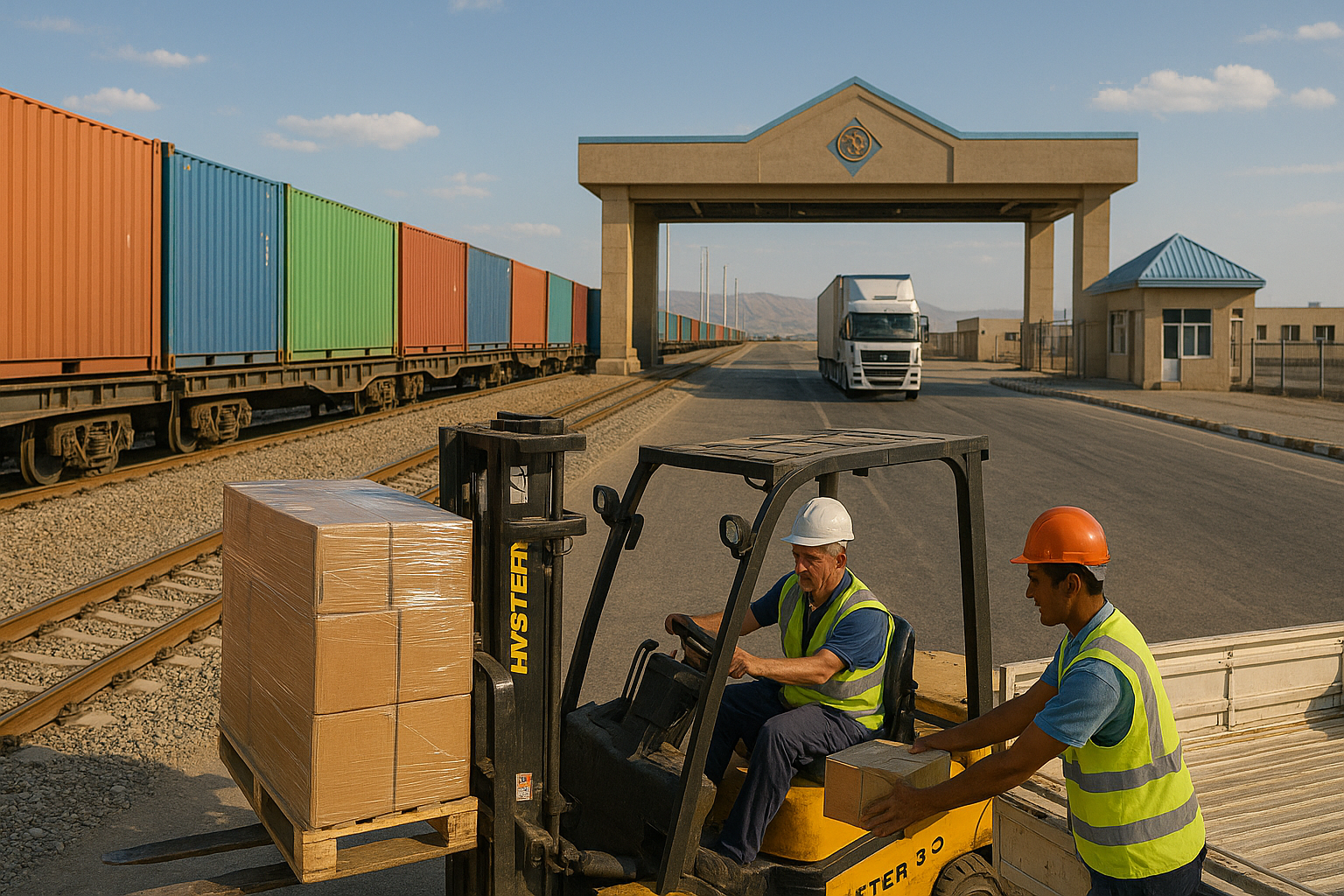ADB Introduces New Index to Address Trade Delays and Infrastructure Gaps in Central Asia
The ADB’s 2025 report introduces the Cross-Border Trade and Transport Facilitation Index (CBTTFI) to diagnose and improve inefficiencies at key CAREC border points. It recommends digitalization, regulatory harmonization, and infrastructure upgrades to enhance regional trade integration.

The Asian Development Bank (ADB), in partnership with Deloitte and supported by the Economic Research and Development Impact Department (ERDI) and the Regional Cooperation and Integration Division (ERCI), has introduced a transformative new study. Released in July 2025, this report dives deep into the persistent inefficiencies plaguing border crossing points (BCPs) across the Central Asia Regional Economic Cooperation (CAREC) region. Despite CAREC’s advantageous geographic position and abundant natural resources, member countries remain underperformers in global trade. The region’s export diversification is low, transit costs remain high, and trade processes are often slowed by institutional and logistical inefficiencies. In response, the ADB and its partners have developed the Cross-Border Trade and Transport Facilitation Index (CBTTFI), a diagnostic tool designed to complement the existing Corridor Performance Measurement and Monitoring (CPMM) system by offering a more granular, subnational lens on border performance.
Introducing the CBTTFI: A Precision Tool for Border Efficiency
The CBTTFI evaluates six strategically chosen BCPs across six countries: Kirmizi Korpu (Azerbaijan), Tsiteli Khidi (Georgia), Serhetabat and Farap (Turkmenistan), Torkham (Pakistan), and Yallama (Uzbekistan). Using a robust thematic framework, the index measures performance across four critical dimensions, customs procedures and formalities, customs coordination, transit cross-border support facilities, and transport regulations. Each BCP was assessed through on-ground surveys, institutional reviews, and numerical performance metrics such as time and cost per crossing, time efficiency, and throughput. While the average CBTTFI score across all BCPs was 68%, the results revealed significant variation. Yallama (Uzbekistan) emerged as the top performer with a score of 77%, followed closely by Torkham (Pakistan) at 75%. Transport regulations were consistently the weakest area across all sites, dragging down overall performance due to inconsistent or overly strict weight and dimensional limits for cargo vehicles.
Yallama stood out in particular for its efficiency in customs formalities, scoring 88% and facilitating crossings at a cost as low as $15. Torkham, meanwhile, boasted strong customs coordination and processed an average of 14 trucks per hour, showcasing the benefits of recent infrastructure investments and digital upgrades. However, even high-performing sites like these suffered from persistent bottlenecks such as the continued requirement for physical document submissions and limited recognition of partner country certifications. At the other end of the spectrum, Farap and Serhetabat in Turkmenistan showed a troubling mismatch between policy and practice, despite having no weight restrictions on vehicles; both points experienced long delays and underutilization due to poor ICT readiness and infrastructural gaps.
A Closer Look at Bottlenecks Along CAREC Corridors
Common pain points emerged across all six BCPs, despite their varying geographic and institutional contexts. One key issue is the persistence of manual document processing, even at sites equipped with electronic data interchange systems. Many BCPs lack the ability to conduct pre-arrival risk assessments or automated cargo clearance, forcing traders to navigate redundant inspection processes and discretionary decision-making by customs officers. This results in longer wait times and higher costs. For instance, at Farap, outbound trucks face an average delay of 30 hours and incur processing fees of approximately $270. In some cases, even where digital platforms exist, border officials continue to require hard copy submissions, undermining the very purpose of ICT investments. Moreover, mutual recognition of quality certifications between neighboring countries remains weak or non-existent, adding layers of bureaucratic duplication.
Kirmizi Korpu and Tsiteli Khidi both demonstrate the challenges of partial digitalization. Although they are equipped with modern queue management systems and surveillance tools, the lack of full procedural integration with neighboring countries results in double-handling of documents and frequent inspections. Serhetabat, while benefiting from high transport regulation scores, reveals the limits of policy reforms that are not matched with infrastructure or digital readiness. The mismatch between technical compliance and actual operational efficiency continues to hinder trade flows and discourage foreign investment.
Policy Roadmap: Digital, Harmonized, and Integrated Borders
The ADB study proposes five strategic reform areas to address these challenges. First is the complete digitalization of customs processes, which includes electronic customs declarations, consignment tracking, automated refunds, and queue management systems. Second is the enhancement of cross-border synchronization, particularly through joint inspections, shared ICT platforms, and mutual recognition agreements. Third is the adoption of risk-based inspection frameworks, reducing the reliance on discretionary checks and allowing faster clearance for low-risk shipments. Fourth, the development of support infrastructure, such as dry ports, testing laboratories, and logistics hubs, is critical to ensure that customs operations can scale effectively with growing trade volumes. Finally, the harmonization of transport regulations, including regional standards for vehicle weight, dimensions, and axle loads, will provide a unified framework that promotes efficiency and reduces transit uncertainty.
Toward a Seamless CAREC Trade Ecosystem
Ultimately, the introduction of the CBTTFI marks a significant leap forward in CAREC’s journey toward seamless trade integration. By expanding the analytical scope of CPMM to include institutional, infrastructural, and procedural variables, this new tool provides governments and policymakers with actionable insights grounded in real-world data. It identifies not just where the delays are occurring, but why, and what can be done to fix them. With the right mix of political will, investment, and regional cooperation, the report makes clear that CAREC countries can unlock new growth opportunities, attract greater foreign direct investment, and strengthen their participation in global trade. The CBTTFI is more than a scorecard; it is a strategic compass pointing toward a more connected and prosperous Central Asia.
- FIRST PUBLISHED IN:
- Devdiscourse
ALSO READ
Redesigning Mobility: ADB's Vision for Gender-Responsive Transport Across Asia-Pacific
Punjab's Controversial Land Pooling Policy Hits Legal Roadblock
Thailand’s Climate Goals at Risk Amid Massive Funding Shortfall, Warns ADB
Diesel and Petrol Vehicles Ban Faces Roadblock
Puducherry Secures Major ADB Loan for Infrastructure Boom










